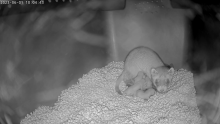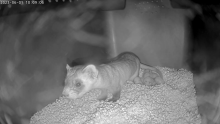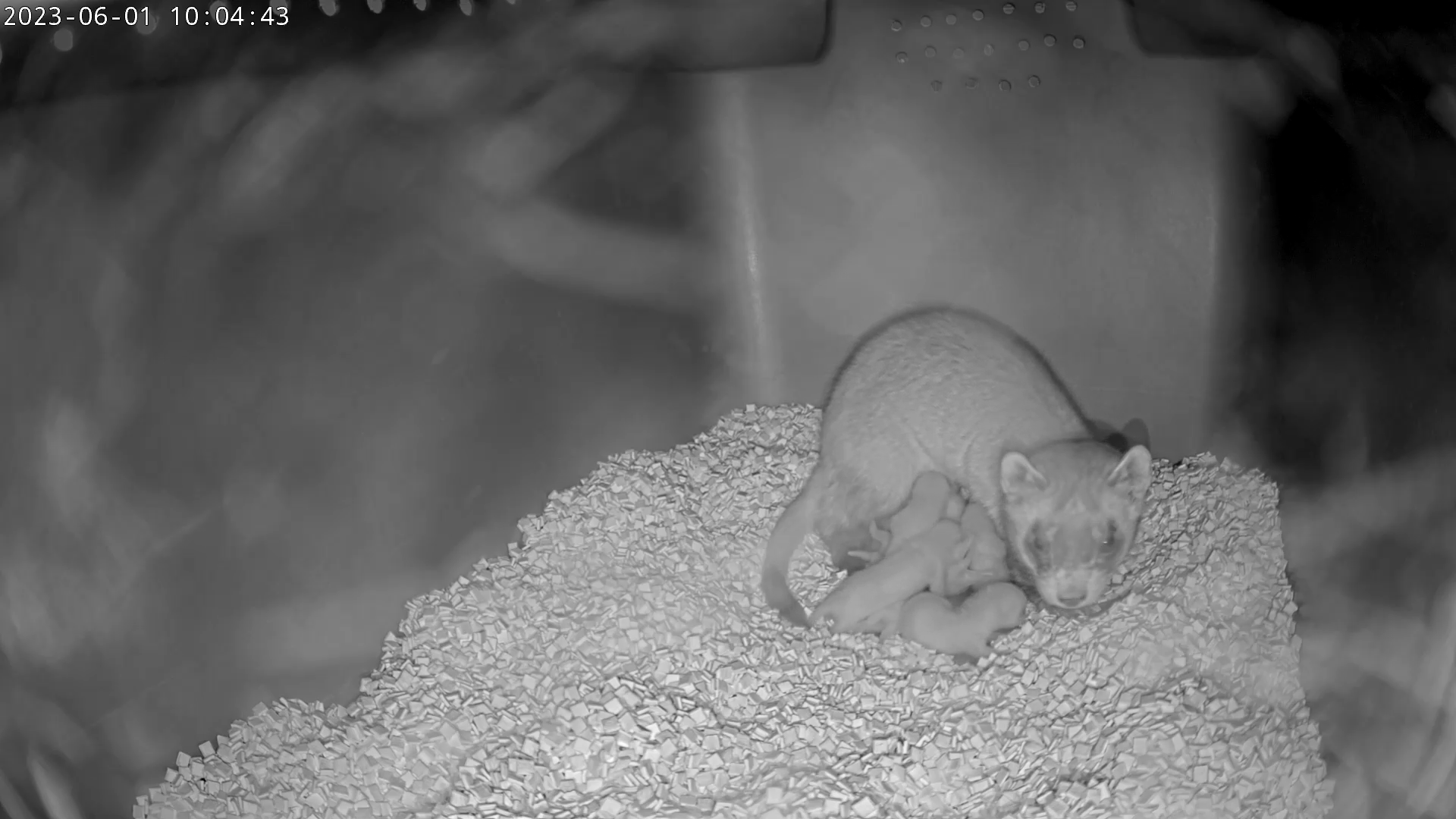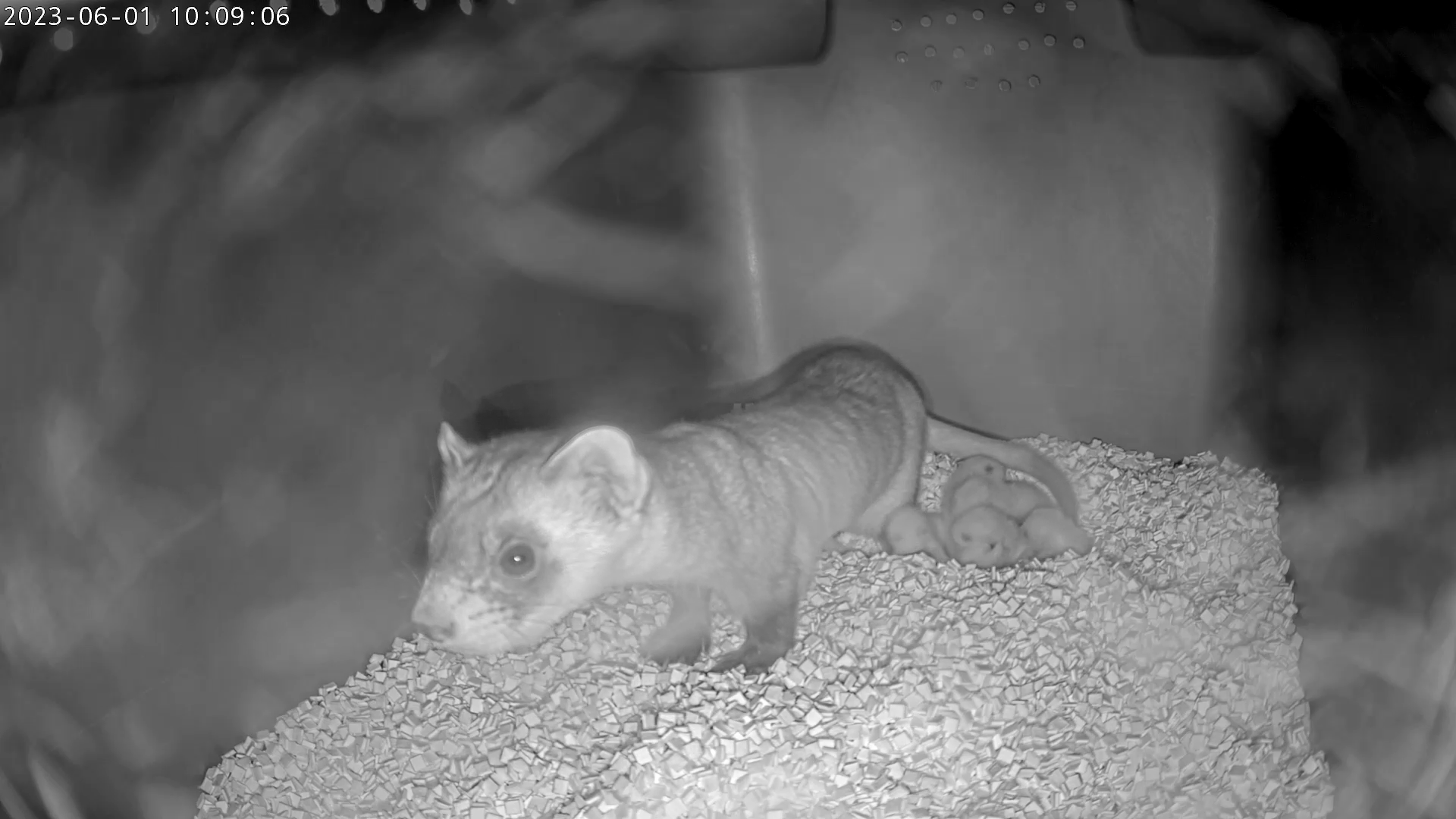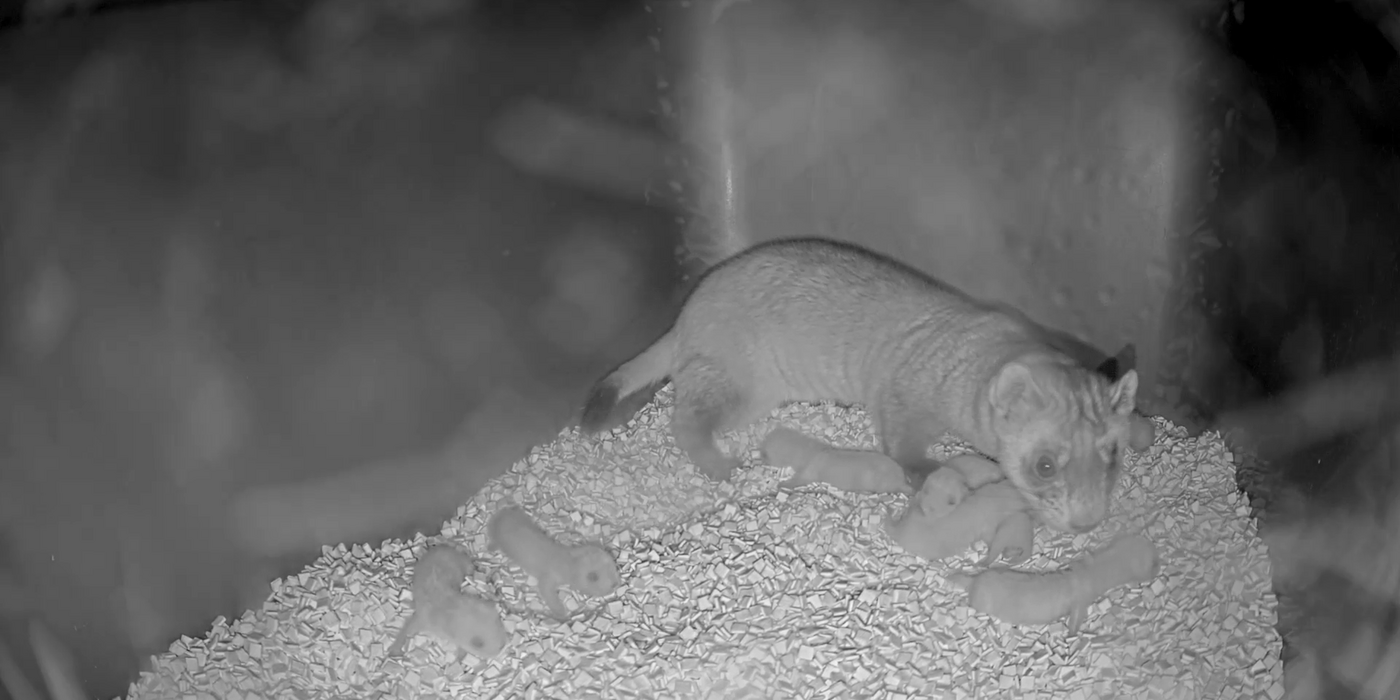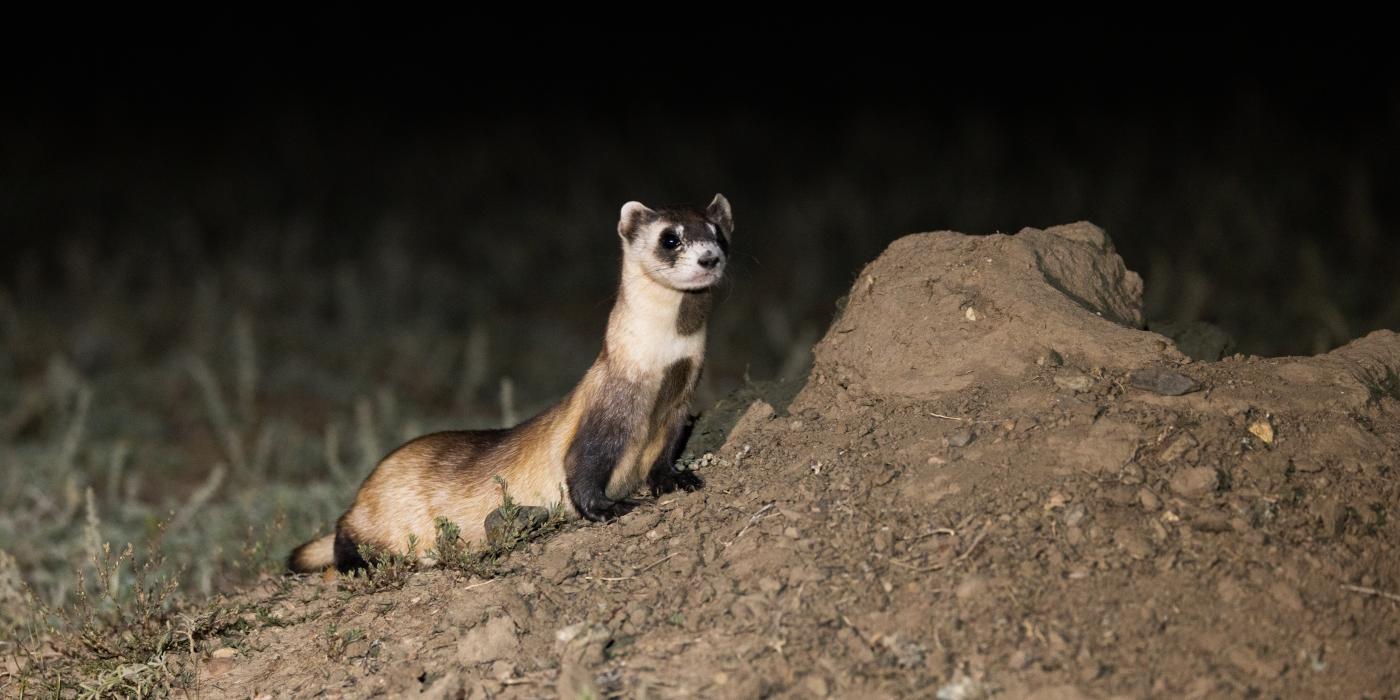Watch Black-Footed Ferret Mom Hickory and Her New Kits on Public Webcam
Endangered Black-Footed Ferrets Born at Smithsonian Conservation Biology Institute
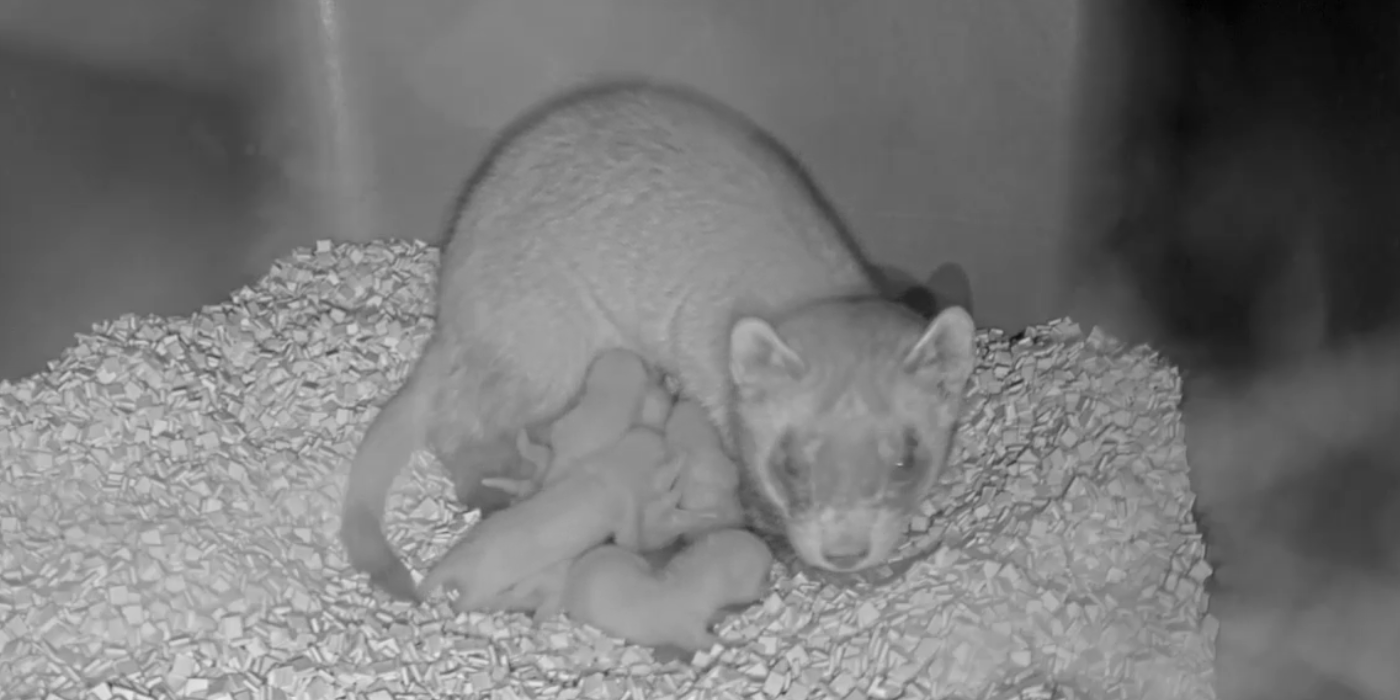
Carnivore keepers at the Smithsonian’s National Zoo and Conservation Biology Institute (NZCBI) in Front Royal, Virginia welcomed a litter of endangered black-footed ferrets last week. One-year-old female Hickory gave birth to six-surviving kits May 27. Animal care staff are closely monitoring the ferrets’ behaviors through the Black-Footed Ferret Cam, a temporary live webcam on the Zoo’s website. Over the past few days, they have left Hickory to bond with and care for her kits without interference. In addition to her kits, Hickory is fostering a kit from another litter. Starting at four days old, the kits receive regular check-ups to ensure they are developing normally and gaining weight appropriately. When the kits are about 10 days, animal care staff will perform a neonatal exam and determine their sexes.
This is the first litter for Hickory and the third for 2-year-old male Talo, who came to NZCBI from the Cheyenne Mountain Zoo in Colorado. Hickory and Talo received a breeding recommendation from the Association of Zoos and Aquariums’ Saving Animals From Extinction (SAFE) program. SAFE tracks the lineage of individual animals in a record called a “studbook.” When considering which animals to breed, a studbook keeper examines the individuals’ genetic relatedness to one another, overall health and temperament, among other factors, and makes recommendations accordingly. This matchmaking process helps ensure the genetic diversity of a population in human care. Hickory is one of 18 breeding female black-footed ferrets residing at NZCBI. Paul Marinari, senior curator of animal care sciences at NZCBI, is the studbook keeper for black-footed ferrets.
At birth, black-footed ferret kits are blind, weigh less than 10 grams and have a thin layer of white fur covering their bodies. Their signature mask-like markings around their eyes and dark markings on their feet will appear when they are about 3 weeks old. They will open their eyes at around 37 days old. At about 45 to 50 days old, they will begin venturing out of their den and exploring the tunnel systems in their enclosures that mimic the prairie dog burrows in which they live in the wild.
The kits will nurse for about a month before sampling from their mom’s diet and eating meat. Around three-to-four months old, the kits will separate from their mother. The SAFE Black-Footed Ferret program will conduct a genetic assessment of the entire black-footed ferret population managed in human care in August. This assessment will determine whether the kits remain at NZCBI, are transferred to another breeding facility or join the U.S. Fish and Wildlife Service pre-conditioning program in preparation for their release into the wild. The pre-conditioning program allows ferrets to learn to live in burrows and show they successfully catch prey before being reintroduced to the wild.
Black-footed ferrets are North America’s only native ferrets. The species was presumed to be extinct until 1981, when the last colony was found near Meeteetse, Wyoming. USFWS and the Wyoming Game Department brought 18 black-footed ferrets into human care. Since 1989, NZCBI has participated in a cooperative breeding program. More than 1,140 kits have been born at NZCBI, with more than 750 of those ferrets being reintroduced to the wild. Currently, 65 black-footed ferrets live at NZCBI.
The Smithsonian’s National Zoo and Conservation Biology Institute (NZCBI) leads the Smithsonian’s global effort to save species, better understand ecosystems and train future generations of conservationists. Its two campuses are home to some of the world’s most critically endangered species. Always free of charge, the Zoo’s 163-acre park in the heart of Washington, D.C., features 2,100 animals representing 400 species and is a popular destination for children and families. At the Conservation Biology Institute’s 3,200-acre campus in Virginia, breeding and veterinary research on 250 animals representing 20 species provide critical data for the management of animals in human care and valuable insights for the conservation of wild populations. NZCBI’s more than 300 staff and scientists work in Washington, D.C., Virginia, and with partners at field sites across the United States and in more than 30 countries to save wildlife, collaborate with communities, and conserve native habitats. NZCBI is a long-standing accredited member of the Association of Zoos and Aquariums.
Related Species:
Image Gallery
